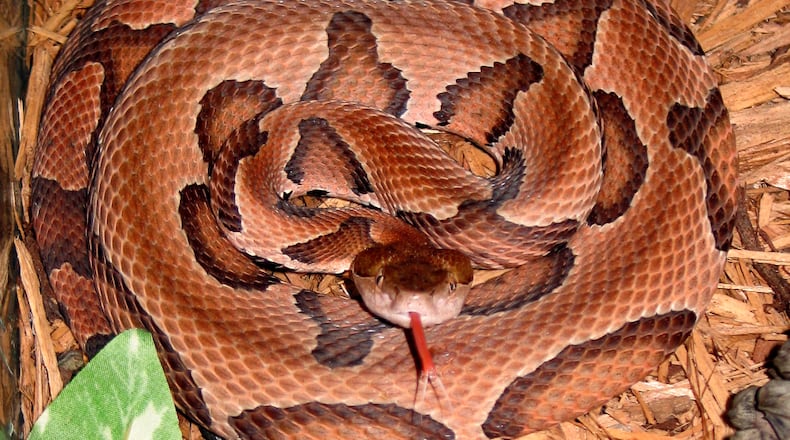Snakes may seem more conspicuous in spring when they are emerging from winter dormancy, but it’s now, in August through September, when snakes reach their highest numbers in Georgia.
That’s because babies of most of the state’s 46 snake species are hatching out or being born live now. With so many snakes about, this seems a good time for a primer on them:
• A little more than half of Georgia’s snake species give birth by laying eggs (such as rat snakes and corn snakes); the rest (including rattlesnakes and copperheads) give birth to live young.
• Most young snakes don’t survive their first year: They die from weather-related stress, disease, predators, being killed on roads, birth defects and other problems.
• Six Georgia snake species are venomous: timber (or canebrake) rattlesnake; pygmy rattlesnake; Eastern diamondback rattlesnake; copperhead; water moccasin (cottonmouth); and Eastern coral snake.
• It’s venomous, not poisonous, snakes. A poison is a toxin that’s swallowed, inhaled or absorbed through the skin. Venom is a toxin that’s injected, as from a snake’s fangs.
• Some 400-450 venomous snakebites are reported in Georgia each year — the vast majority from copperheads. Snakebites rarely are fatal, but they can cause serious complications.
• According to veteran Georgia snake expert Whit Gibbons, “when copperheads feel threatened, they are more likely to strike at someone than is any other venomous snake species native to the Southeast.”
• Snakes are classified into two broad categories — ambush or forager — according to how they hunt prey. Ambush snakes, such as rattlesnakes, may lie still for hours or even days waiting for prey to come within striking distance. Forager snakes, such as rat snakes and racers, may range far and wide to find prey.
• Snakes are very beneficial ecologically — and economically — because they eat rats, mice and other animals deemed to be pests. A person could face a $1,000 fine and jail time for killing a nonvenomous snake in Georgia.
IN THE SKY: From David Dundee, Tellus Science Museum astronomer: The moon is new on Saturday (Aug. 27). Mercury is very low in the west just after dusk. Rising in the east are Venus, an hour before dawn; Mars, just after midnight; Jupiter, a few hours after sunset; and Saturn, around sunset.
Charles Seabrook can be reached at charles.seabrook@yahoo.com.
About the Author
Keep Reading
The Latest
Featured


